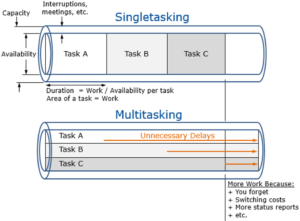Juggling 101
Category : PROspective
Juggle: to throw several objects up into the air, and then catch and throw them up repeatedly so that one or more stays in the air, usually in order to entertain people1
Sound familiar?
Just when you think you have it under control, another assignment /project /responsibility gets added to your list. How do you find an APE while keeping up with your readings and assignments, preparing for midterms, fulfilling your REAL responsibilities, navigating your roommate issues, while eating healthy, and trying to get to the gym… Oh – and keeping in touch with your friends across the country, calling your parents… keeping up with the latest episode of…
Or, are you are trying to circumnavigate the pressures of applying for grant funding, preparing course/lecture material, writing articles, dealing with administrative deadlines while balancing the demands of parenting and relationship responsibilities, when your HVAC has to be replaced, and your car transmission is on the fritz…
How are you doing it all?
You multi-task of course. You try to accomplish as much as you can, when you can, all at the same time.
Now, while doing things simultaneously may seem like the height of efficiency, in actuality, it reduces work quality and wastes the precious time you are trying to save, resulting in the need to multitask more to complete your duties/responsibilities. All counterintuitive.
Multitasking forces your brain to switch back and forth very quickly from one task to the next. Interruptions as brief as two to three seconds can be enough to double the number of errors on a task.2 Numerous studies confirm that task-switching results in loss of productivity, accuracy, and efficiency, it also reduces the ability of the brain to learn new skills.

While the obvious effects of this are lackluster results in your endeavors, according to Dr. David Meyer from the University of Michigan, the more serious consequences are the adverse effects on your health, because of the constantly elevated stress levels.3 “Multitasking is especially stressful when the tasks are important, as they often are on the job. … The brain responds to impossible demands by pumping out adrenaline and other stress hormones that put a person ‘on edge.'”
Dr. Sandra Chapman from the Center for Brain Health at the University of Texas, has found that “multitasking is a brain drain, that exhausts the mind, zaps cognitive resources, and if left unchecked, condemns us to early mental decline and decreased sharpness.” Numerous studies indicate that chronic multitaskers have increased levels of cortisol, shown to damage the memory region of the brain.4
Researchers Ophir, Nass and Wagner at Stanford studying (student) media multitaskers, found that high multitasker students were always drawing from all the information in front of them, and were not able to keep things separate in their minds. “When they’re in situations where [there] are multiple sources of information coming from the external world or emerging out of memory, they’re not able to filter out what’s not relevant to their current goal.”
Doing more things does not determine better results. Doing better things determines better results. Doing one thing to the best of your ability brings about optimal results.

There is time enough for everything, in the course of the day, if you do but one thing at once; but there is not time enough in the year, if you will do two things at a time.
– Phillip Stanhope
Single tasking
Single tasking, as the term implies, is doing one task at a time with as few distractions/interruptions as possible. And yes, it is easier said than done.
Start here:
Do one thing at a time, but do it well.
- The single browser tab habit: limit yourself to having one tab open at any given time to prioritize the task you are trying to complete. And for more motivation, you may be inspired to try a “single-tabbing” challenge like James Hamblin.
- The evening planning routine: set 10 minutes aside nightly to plan the next day’s tasks –Identify your two-three priorities, and tackle them first.
- Minimize distractions/focus deeply: keep your smartphone in your drawer, turn off your email to focus on one task at a time. This is harder than it seems, so start with 15-minute intervals, and increase to longer time periods of intense focus.
- Get rid of clutter: keep your workspace as minimal as possible
- Use breaks effectively: stand up, drink a glass of cold water, walk around the office perimeter. You will be more effective, if several times during the day you step away from mentally challenging tasks for 3-5 minutes.
For an excellent, more detailed training-plan for single-tasking and focus, take a deep, undistracted dive into this how-to guide from ZenHabits.net.
Our days are filled with a constant barrage of distractions, unexpected challenges and increasing responsibilities. But, the science and experience are clear – by doing less all at once, you will likely be able to accomplish more much more.
1 Comment
Muhammad Zia ul Haq
September 23, 2020 at 4:40 pmImmensely helpful. Thank you for sharing Farah!